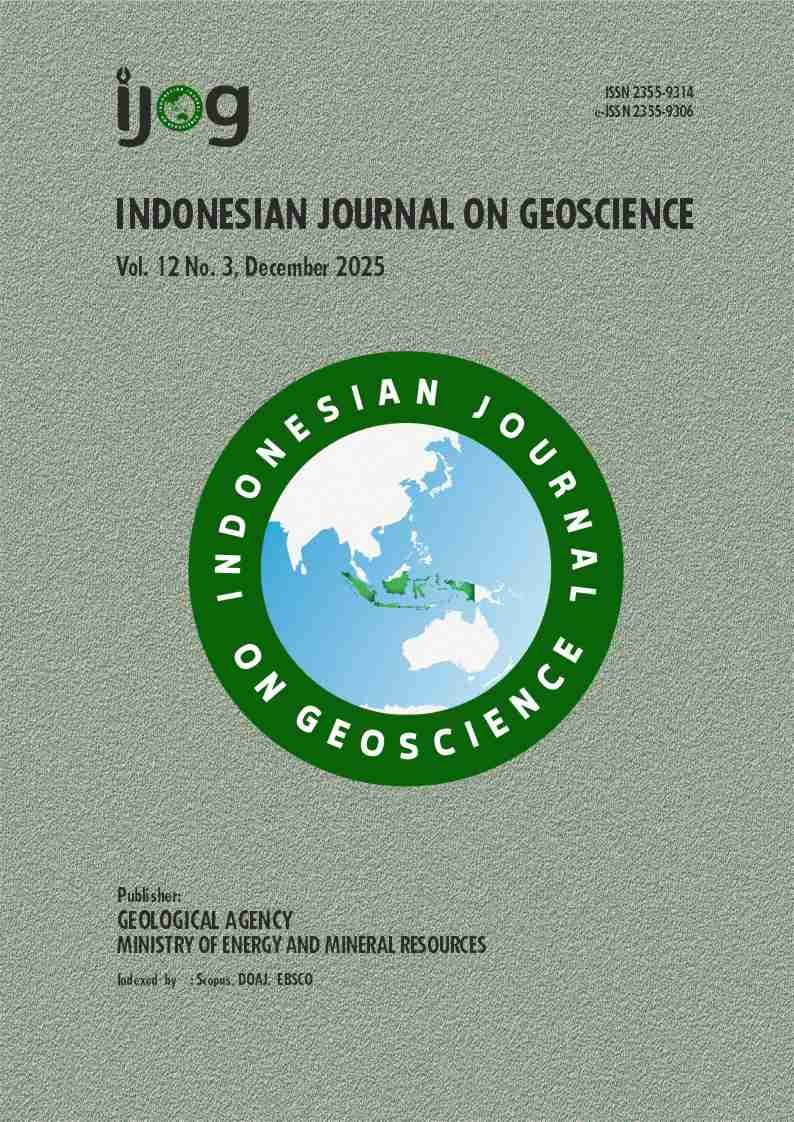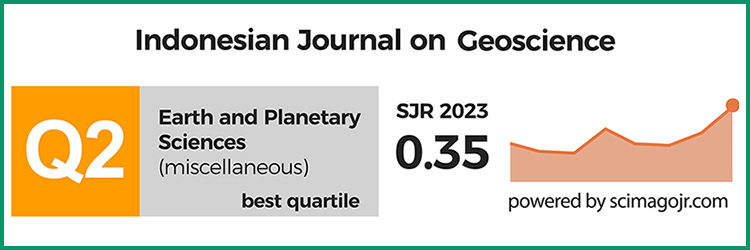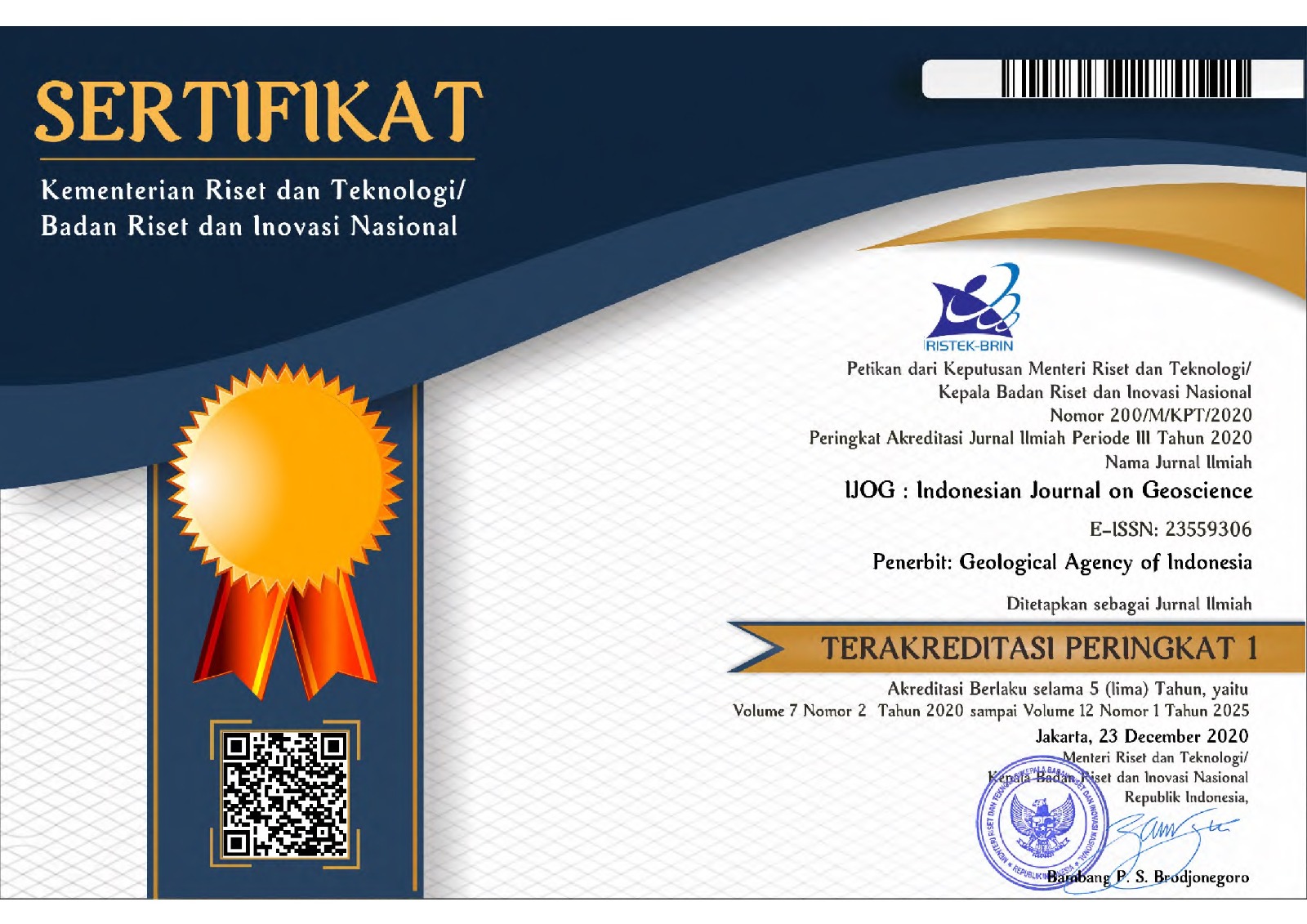Analysis of Lithological Aspects and Their Influence on Slope Stability of the Failed Riverbank in Ajil, Hulu Terengganu, Malaysia
DOI:
https://doi.org/10.17014/ijog.12.3.367-382Abstract
Riverbank erosion has become a serious problem in The Hulu Terengganu River recently. In some locations, the failed riverbank is particularly hazardous, especially near recreational and plantation areas. Therefore, this study aims to assess the lithological characteristics controlling the failed riverbank in Ajil, Hulu Terengganu, Malaysia. Two localities were chosen based on the hazardous conditions and severity of erosion along the riverbanks. Both riverbanks were vertically logged to differentiate lithological units. Field observations identified four lithological horizons, designated as Litho A-D, based on in-situ characteristics (i.e. structure, plant roots, grain size). Samples were taken from selected horizons for Particle Size Analysis (PSA) and Atterberg limit testing. The results of the investigation from PSA indicate that the samples from localities L1S1, L2S1, L1S2, and L2S2 exhibit positive skewness, with fine sediment sizes identified as silt-clay for L1S1 and L1S2, and sand-silt for L2S1 and L2S2. Conversely, samples L1S3 and L2S3 demonstrate a trend of negative skewness, indicating coarse sediment sizes. The results indicate that the sand-silt composition suggests a decrease in water flow energy from high to low. The coefficient of uniformity (Cu) in this study ranged between 3.6 to 9.81, and the coefficient of curvature (Cc) ranged from 0.63 to 1.66. The Cc values for L1S3 and L2S3 are below 1.0 indicating well-graded soil, while the Cc values for other samples are above 1.0 indicating poorly graded soil.



















